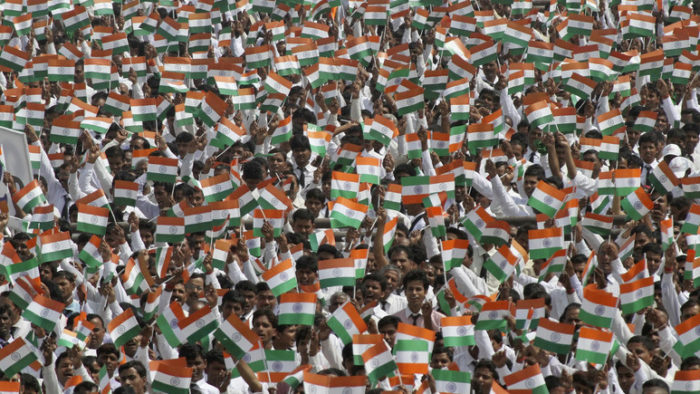The count of the Indian disapora has increased to 17.5 million, making it the largest in the world, according to the UN’s International Migrant Stock 2019, released by the Population Division of the UN Department of Economic and Social Affairs (DESA) a few days ago. It now comprises 6.4% of the total global migrant population.
In 1990, India was behind Russia and Afghanistan as a source of international migrants at 6.6 million with Russia sending 12.7 million abroad and Afghanistan 6.8 million. In 2019, Russia fell to the fourth position behind Indian, Mexico and China with 10.5 million migrants.
In economic terms, Indians abroad sent back $80 billion, making the country the leading recipient of funds from overseas.
"When Indian Prime Minister Narendra Modi visits the United States, he is among compatriots – 4.4 million of them. India has the largest diaspora in the world, and the US is their top destination: in 2017, people of Indian descent made up 1.3% of the American population, and they are the most successful immigrants in the country," Katharine Rooney, Senior Writer said during the World Economic Forum held in September.
Indians have always been labelled a model immigrant community, both in Europe, especially the UK, and the US. Economics Professor Nirvikar Singh, co-author of The Other One Percent: Indians in America breaks down the fascinating story of how a population from a developing country became the most educated, highest-income group in the world's most advanced nation—in a single generation. Singh has written: “Indian American entrepreneurship has been quite prominent. It's a very important engine of economic growth.”
A trend that began in 1965, due to relaxation of immigration policies led to a surge in migration, which has not waned to this day. Most of the people moved to the US for educational and employment opportunities. Every Indian family, in urban areas, has a relative abroad, who has studied or is working there and who eventually aspires for citizenship.
A UC Santa Cruz magazine article chronicles the various points of success:
• 68 percent of India-born immigrants living in the U.S. have college degrees;
• Indian immigrants are concentrated in industries like information technology;
• Their average incomes are generally higher than the average incomes associated with their level of educational attainment;
• Rates of self-employment and entrepreneurship are higher at both the high and low ends of the income scale, reflecting engagement in both hospitality and retail, as well as medicine and the high-tech industry;
• Though Indians make up 1 percent of the population, they comprise 8 percent of the founders of high-tech companies—and one-third of technology startups in Silicon Valley. Indians form 8 per cent of the number of doctors in the US.
In an article in Time Magazine in May this year titled: We do not come Empty Handed: The Economic Case for Immigrants, Suketu Mehta author of This Land is Our Land: An Immigrant's Manifesto, writes “America has succeeded, and achieved its present position of global dominance, because it has always been good at importing the talent it needs.”
Economically, immigrant workers are younger, they will work longer and pay more into the system. According to a 2013 projection, immigrants, both legal and illegal, will contribute half a trillion dollars into the Social Security trust fund over the following 25 years, says Mehta. Over the following 75 years, they will contribute at an even faster rate, for an estimated total of $4 trillion.
List of countries and number of Indians. Source: MEA NRIs-and-PIOs_1
Economic factors have also lured large numbers of Indians to the Persian Gulf, particularly the United Arab Emirates (UAE), which is home to 3.1 million Indians. The number of Indians living in the UAE and other countries in the region such as Saudi Arabia and Oman has increased fourfold in the space of a decade, from 2 million in 2005 to more than 8 million in 2015, writes Rooney.
Sheikh Nahyan bin Mubarak Al Nahyan, a minister, has said Indians in the UAE had distinguished themselves in education, finance, banking, health care, communications, engineering and businesses.
“India must be proud of that,” he said. “They have represented their country in the finest possible fashion. Indians who crossed the Arabian Sea to live and work in the UAE have strengthened the flourishing relationship between our two countries, friendship, trust and cooperation that Indian and Emiratis enjoy here. We rejoice in being India’s largest trading partner.”





